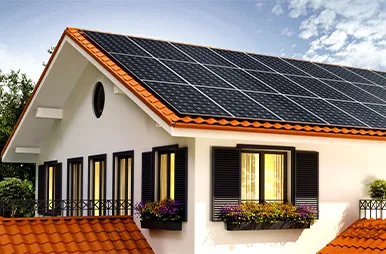solar bifacial panels
The Rise of Solar Bifacial Panels A Sustainable Energy Solution
As the world strives to transition towards renewable energy sources, solar power has emerged as a leading contender. Among the various innovations in solar technology, bifacial solar panels stand out for their efficiency and versatility. These panels, designed to harness sunlight from both their front and rear sides, are making waves in the renewable energy sector and presenting a promising solution to energy needs.
Understanding Bifacial Technology
Bifacial solar panels differ from traditional solar panels primarily in their design and functionality. A standard solar panel is typically monofacial, meaning it collects sunlight on one side. In contrast, bifacial panels are constructed with cells on both sides, allowing them to capture sunlight directly from the sun as well as reflected light from the ground. This dual exposure significantly increases the amount of energy generated.
The key to the efficiency of bifacial panels lies in their ability to utilize diffused light. Research indicates that bifacial panels can produce up to 20-30% more energy than their monofacial counterparts, depending on the installation conditions and the reflectivity of the surface beneath them. Therefore, the choice of installation site can significantly enhance their performance; for instance, areas with snow, sand, or lighter-colored surfaces can boost energy yield due to better light reflection.
Advantages of Bifacial Solar Panels
1. Higher Energy Output The dual-sided generation capability allows bifacial panels to produce more electricity. This enhanced output not only maximizes the efficiency of space but also contributes to reducing the overall cost per watt of solar energy generated.
2. Longer Lifespan Bifacial panels are generally constructed with robust materials that can withstand harsh environmental conditions. Many manufacturers provide warranties that extend beyond those of traditional panels, reflecting their confidence in durability and longevity.
3. Reduced Land Usage With higher energy output from bifacial panels, the land requirement for solar installations can be reduced. This is increasingly important as urban areas seek efficient use of space, and developers aim to minimize ecological footprints.
solar bifacial panels

4. Versatility in Application Bifacial technology can be applied in various scenarios, from large-scale solar farms to residential rooftops. Their ability to seamlessly integrate into existing structures and landscapes makes them an attractive option for different types of installations.
5. Sustainability By maximizing energy production while minimizing land use, bifacial panels contribute significantly to sustainability goals. They align with global efforts to reduce carbon emissions and reliance on fossil fuels, supporting a cleaner, greener future.
Challenges and Considerations
Despite their numerous advantages, bifacial solar panels are not without challenges. The initial investment can be higher than traditional panels, although the long-term energy savings and increased output often outweigh these costs. Proper mounting and installation are crucial for maximizing reflected light capture. Therefore, site assessment and planning are essential steps in the bifacial installation process.
Furthermore, understanding the local climate and geographic features can also impact performance. For example, areas with heavy cloud coverage may not benefit significantly from bifacial technology, as the effectiveness is reliant on adequate sunlight and reflection.
Looking Ahead The Future of Bifacial Solar Panels
As the solar energy market continues to innovate and evolve, bifacial panels are poised for growth. With increasing demand for clean energy and advancements in solar technology, the adoption of bifacial panels is likely to rise, driven by both their efficiency and sustainability.
Government incentives and policies promoting renewable energy development will also play a critical role in supporting bifacial technology's expansion. As more industries and households recognize the benefits of solar energy, bifacial solar panels could become a staple in the energy landscape.
In conclusion, bifacial solar panels represent one of the exciting frontiers in renewable energy technology. Their ability to produce higher energy outputs, potential for reduced land use, and alignment with sustainability principles showcase their promise as a vital component in the global transition to renewable energy. As technology continues to advance, bifacial solar panels may very well illuminate the path to a cleaner, more energy-efficient future.
-
Unlocking Energy Freedom with the Off Grid Solar InverterNewsJun.06,2025
-
Unlock More Solar Power with a High-Efficiency Bifacial Solar PanelNewsJun.06,2025
-
Power Your Future with High-Efficiency Monocrystalline Solar PanelsNewsJun.06,2025
-
Next-Gen Solar Power Starts with Micro Solar InvertersNewsJun.06,2025
-
Harnessing Peak Efficiency with the On Grid Solar InverterNewsJun.06,2025
-
Discover Unmatched Efficiency with the Latest String Solar InverterNewsJun.06,2025







